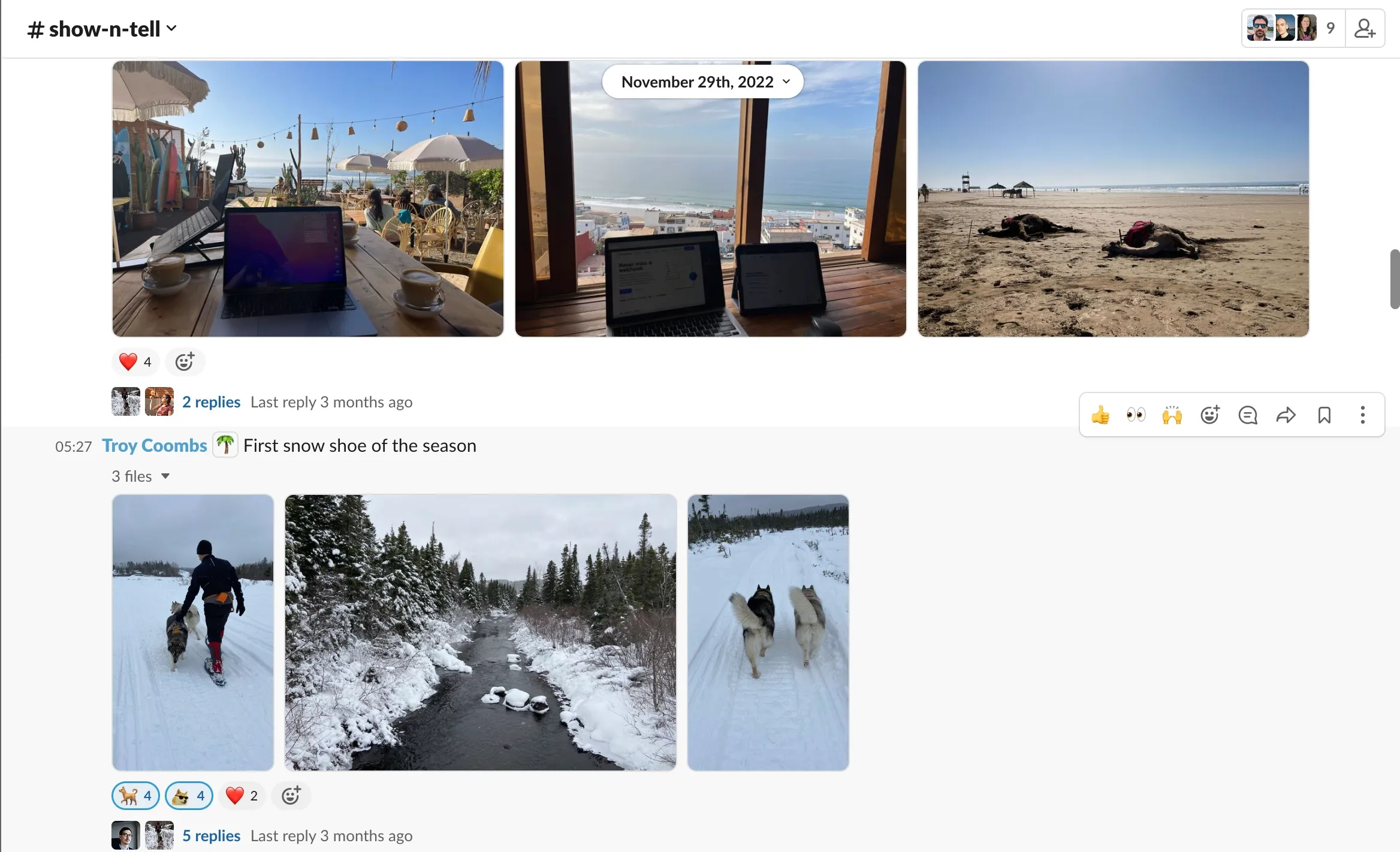Learning How to Stay Connected As a Team That Grew From 4 to 8
2022 was a dynamic and exciting time for Hookdeck, in big part because we doubled our team. We went from a humble 4 in January to a modest 8 by December, which may not sound like much of a change at first glance. However, it became clear that staying connected as a growing group posed new challenges, and deserved new solutions. In this post, I am going to reflect on how our original systems of communication needed updating as our team evolved, as well as how we were able to work together to strengthen our team culture.
Communication as a team of four
As a distributed team, I believe it’s especially important to foster connectivity with one another and bond over our common goals so that everyone feels empowered and in this together. At the beginning of 2022, this was easy. With Hookdeck being a total of 4 people, we were always working together on projects, and it was necessary for everybody to be communicating regularly. Feedback channels were straightforward, as we were all included in everything.
The small nature of our team made it so that we were able to more easily stay connected with each other, not only in our work setting but also through activities like monthly game nights and virtual hangs. With only a handful of schedules to coordinate, organizing social time felt accessible and not overly complicated.
From four to eight
By December, the team had increased by another 4 awesome people. Quickly, I realized that networking with 8 people was in fact completely different than what I was used to, and as we filled more positions it was revealed to us that our ways of connecting that existed before needed updating.
Challenges of staying connected as a growing team
One of the biggest problems we ran into was the need for updated feedback loops and communication channels. Too many easy-fix issues were being left unattended to all because we had not built the right channels for instant feedback. Keep in mind that because the team grew, it wasn’t absolutely necessary for each of us to be involved in every project, which led to a decrease in overall communication.
On top of this, it was literally more difficult to keep in contact as now there were eight of us in different time zones, often even traveling between time zones. This made virtual hang outs and fun things like games nights much harder to schedule.
Working through it
At Hookdeck, we have always valued and desired connection as a team. It keeps us motivated and energized, and reminds us that we’re building something really cool together. This is where our retreat comes in.
We took advantage of our 3 days in person to problem-solve and brainstorm solutions to our obvious need for cemented communication channels. I stressed what I had learned so far to the group: the importance of over sharing. It had been too easy in the months before to fall into a cadence of under-communication, but we needed some real heroes on the team who were going to step it up and share.
This manifested in really cool ways: not only have we picked up the pace as far as general work feedback, but our team has created a culture where we spontaneously send each other cool things we’re up to or have done recently. We took it a step further and implemented a weekly show and tell Slack channel, which gives us the opportunity to get to know each other as people better.

Connectivity requires evolving solutions
Naturally, it takes trial and error to find out what solutions will stick, and which ones should evolve or just straight up be thrown out. In our case, we achieved this by being brutally honest whenever things were going wrong or needed updating. For example, for a while we decided to try out automated calls using Donut, a Slack integration. We enjoyed our show and tells so much and wanted to see if we could be even more connected. But after a while, that began to feel too forced so we binned it and kept our beloved show and tell.
Conclusion
As a first-time founder, I’ve noticed it’s one thing to say you believe in the importance of connection, and a totally different thing to actually put the effort into helping your team stay engaged and connected. For me, putting in that work was a big part of last year, and it yielded such positive results that we officially hired a People and Culture Lead, Samantha Stortz-Stierle, to head the initiative!
If working for Hookdeck sounds like a fit for you, check out our open positions here.